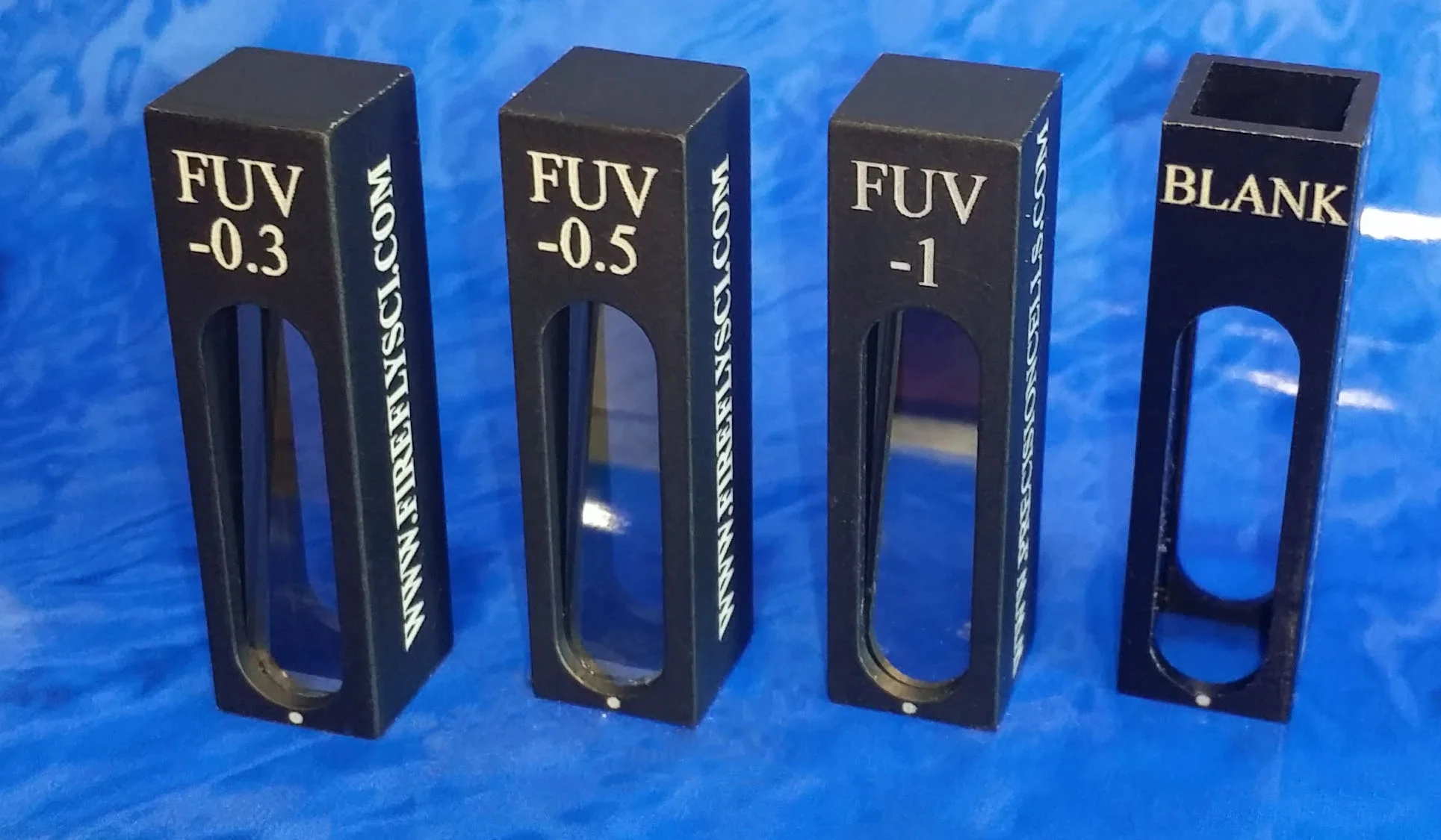What is a Cuvette – Cuvette Glove Guide
/Hi everyone! We’re back with another exciting post about our favorite topic. Can you guess what it is? That’s right! Cuvettes!! We sure love to love cuvettes here at FireflySci and do you know what we love even more? Providing you with the most complete information on cuvettes on the web.
What is a Cuvette?
For our first time visitors, we’ll briefly explain what a cuvette is and what it does. Basically, a cuvette is like a rectangular test tube. When people ask me what I do, I tell people I sell rectangular test tubes. This seems to get a blank nod from the person but come on, how many people have actually heard of a spectrophotometer cuvette?
Cuvettes are used similarly to test tubes because they hold aqueous samples. However, unlike test tubes, a cuvette is used in a spectrophotometer or a fluorometer to measure the absorbance or % Transmission of light at a specific wavelength.
To use a cuvette you simply inject a sample into the cuvette, filling it to about 80% capacity. This value varies from cuvette to cuvette. We like to make things as easy as possible so we provide these values on our website for all of our cuvettes so you know exactly how much sample to measure out.
What is a Cuvette – Other Names for Cuvettes
Cuvettes have a few different names that they go by. Here is a list of the ones that we know of:
- Cuvettes
- Cells
- Capillaries
- Quartz cell
- Spectrophotometer Cuvette
- Cuvette cell
- Sample Cuvette
Now finally let’s talk about which gloves are best for handling cuvettes.
What is a Cuvette – Glove Guide
Who would have thought that glove types actually make a big difference when handling cuvettes. There are many different types of disposable gloves but which are best for handling cuvettes? Let’s go over them one by one and find out.
Nitrile Gloves
Nitrile gloves are probably the most commonly used gloves. I’ve used them myself and have found them to work very well and not be too cumbersome. Nitrile gloves are a good thickness and provide a durable glove. Nitrile gloves excel in the area of puncture resistance. This synthetic rubber is pretty tough and has the best strength out of all the other materials.
Benefits include:
- No latex (for people with latex allergies)
- Great puncture resistance
- Fits nicely to your hand
- Long shelf life
- High level of sensitivity
Latex Gloves
Latex gloves are made from a natural rubber. These are also used in a lot of laboratories and hospitals, but nitrile gloves have been replacing them due to people having latex allergies.
If allergies are not an issue, then latex gloves are more comfortable than nitrile and offer a bit more dexterity. Latex gloves also offer better protection from chemicals than nitrile so, if possible, go with latex when working with dangerous chemicals.
Benefits for Latex Gloves:
- Good chemical resistance
- Nice tight fit to the skin so you barely notice you’re wearing gloves
- Biodegradable
- Best level of sensitivity
Vinyl Gloves
Now most labs do not use vinyl gloves. The most popular use for this material is in the food industry. However if your lab is on a budget, you won’t beat the price of vinyl gloves. Vinyl gloves have the lowest durability and protection so the only area they really shine in is price.
Benefits of Vinyl:
- Anti-static
- Best price
- Good for non-hazardous materials
Best Gloves for Dangerous Chemicals
If you are working with really dangerous chemicals, you’re going to need some heavy duty gloves for protection. A great glove for this is made by Ansell Healthcare and it is made from a material called Viton-Butyl. These gloves come in thicknesses of 8 mil and 4 mil. 4 mil is about double the thickness of a nitrile glove.
The 8 mil glove provides protection against chlorinated solvents such as chloroform, carb tetrachloride and methylene chloride. The thickness of these gloves could make handling a cuvette cumbersome, so please keep this in mind.
And the winner is….
Well, there are two winners. If you don’t have latex allergies, go with a latex gloves. You won’t be able to beat the dexterity and strength of these gloves.
If you do have a latex allergy, then go with a nitrile glove.
If you have any questions on the best gloves for cuvettes or anything else cuvette relate, please send us an e-mail (info@fireflysci.com) or leave us a comment below.
Here’s to your success!
The FireflySci Team
![firefly_logo_FINAL [Black].jpg](https://images.squarespace-cdn.com/content/v1/5411d5c0e4b02e1c8b27565a/1434491508803-XB4OF7YDY46Z72L5U5AP/firefly_logo_FINAL+%5BBlack%5D.jpg)







